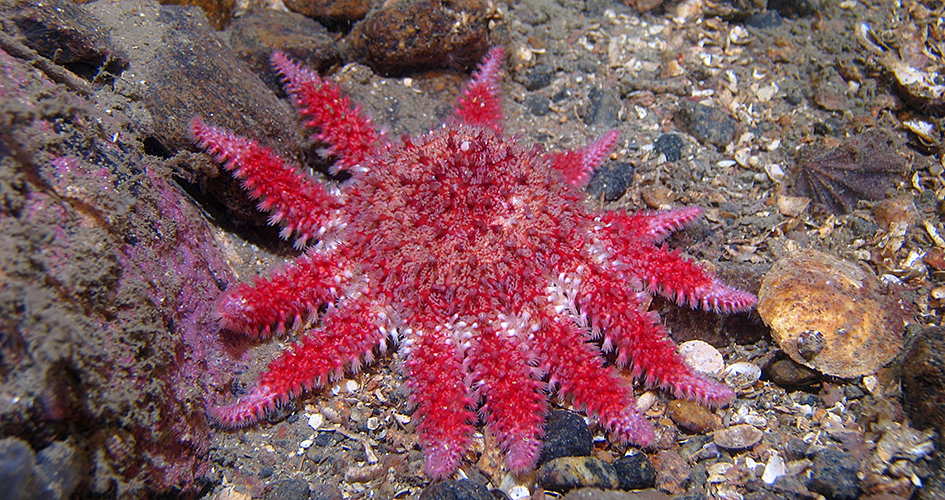 Foto: Tomas Lundälv
Foto: Tomas LundälvIn the sea
The waters around Koster conceal many fauna and algae that are not present anywhere else in Swedish seas. One of Sweden’s two known coral reefs is here.
The reef provides valuable habitat for hundreds of species, and the great variety that exists in these nooks and crannies compares favourably with tropical reefs. Here you will find sponges, brachiopods, ascidians, brittle stars, crabs and much more. A reef of similar size was discovered in the spring of 2013 east of the Väderö islands at a depth of 90 metres.
6,000 species live here
Kosterhavet is made up of everything from shallow eelgrass meadows to deep hard bottoms, and it has an unusual abundance of animals, plants and algae. In the shallow coves, on the rocky shores and in all the environments we associate with the Bohus coast, about 6,000 different species live. Close to 300 of them do not exist anywhere else in Sweden.
Water with adequate salinity
What accounts for the great variety of species is the fact that the water has enough salinity to allow many species of marine animals, plants and algae to flourish here. In addition, the deep and steep rock walls in the Koster fjord’s deep trench resemble environments far out in the Atlantic. As a result, many species that otherwise would exist only there also live in the depths of the Koster fjord.
The marine sponge
Geodia barretti belongs to a type of aquatic invertebrate that is called a common sponge or marine sponge. It can grow to half a metre in diameter and weigh up to 24 kg. Because of its appearance, in Swedish it is called svampdjur, literally “mushroom animal”. Kosterhavet is Sweden’s best place to look for that kind of mushroom – under water. About 60 species of the marine sponge are not known to exist anywhere else.
The brachiopod
Macandrevia cranium is a mussel-like animal that lives affixed to rocks and other hard surfaces. Brachiopods belong to a very old fauna group that has been in existence for more than 500 million years. They could be called “living fossils”.
European giant file clam
Acesta excavata, the largest mussel in the area, can measure up to 20 cm in length.
The Koster sea pen
Kophobelemnon stelliferum is a coral fauna that is not found anywhere else in Sweden. It stands on the bottom and can become close to 75 cm high. However, most of it is buried in the bottom sediment.
The green spoonworm
Bonellia viridis can be found in a few places in Kosterhavet. The female can grow to 1.5 metres in length with the throat extended. The larvae can become either male or female, depending on where they land. A larva that happens to fall down on a female develops into a male, but if it instead lands on the bottom, it becomes a female. The males are small and live as parasites on the females.
The eye-coral
Lophelia pertusa is Sweden’s only reef-building stony coral. It can be found only in the Koster-Väderö fjord. The reef at Säcken in the north-eastern part of the national park is at a depth of 85 metres and measures about 5,000 square metres. Today only about 300 square metres of living eye-coral remain. The remainder is calcareous skeletons from older, dead coral.
Share with your friends
Share this page with your friends on Facebook, X (formerly Twitter), Google+ and e-mail.





